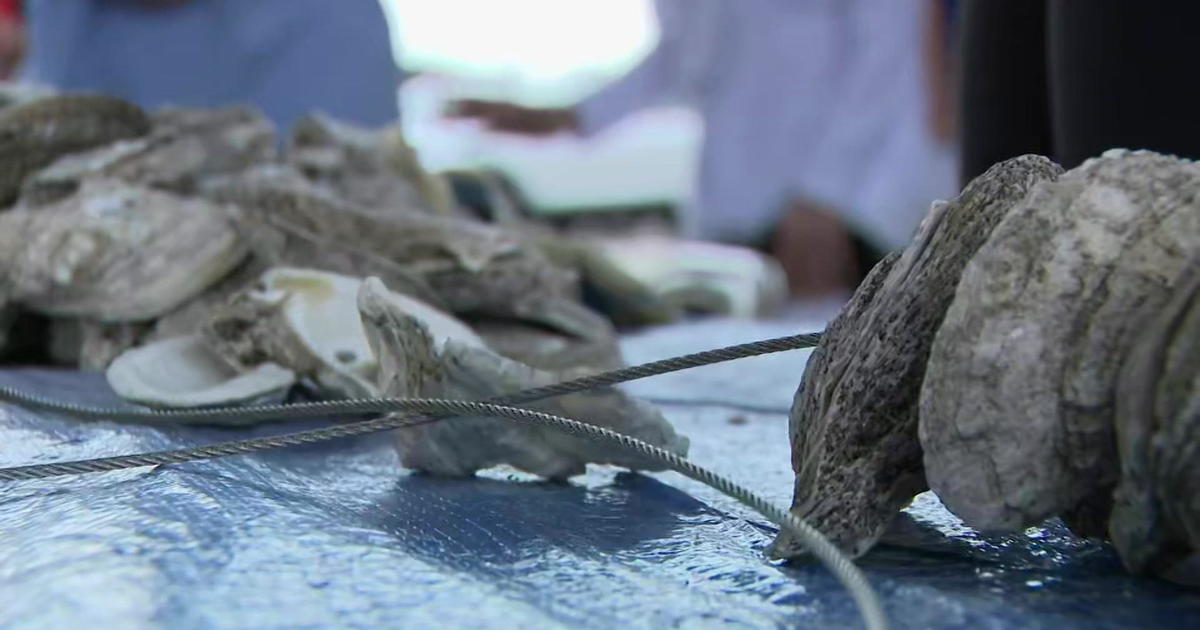NASA Launches Spacecraft To Jupiter
CAPE CANAVERAL (CBS4) -- America's manned space shuttle program may be finished but NASA launched a new solar-powered spacecraft Friday afternoon on a journey to Jupiter.
The spacecraft, named Juno, blasted off aboard an unmanned rocket Friday from Cape Canaveral. It will take Juno five years to reach the largest planet in the solar system.
Juno is solar powered with three huge panels. It will be the farthest any solar-powered craft has ever traveled. Previous Jupiter probes have relied on nuclear energy.
With Juno, scientists hope to answer some of the most fundamental questions of our solar system.
"How Jupiter formed. How it evolved. What really happened early in the solar system that eventually led to all of us," said Juno's chief investigator Scott Bolton, an astrophysicist at Southwest Research Institute in San Antonio.
Bolton said Jupiter is like a time capsule. It got most of the leftovers from the sun's creation nearly 5 billion years ago -- hence the planet's immense size -- and its enormous gravity field has enabled it to hold onto that original material.
Jupiter is so big it could hold everything in the solar system, minus the sun, and still be twice as massive. Astronomers say it probably was the first planet in the solar system to form.
Juno will venture much closer to Jupiter than any of the eight spacecraft that have visited Jupiter since the 1970s. Juno represents the next step, Bolton said.
"We look deeper. We go much closer. We're going over the poles. So we're doing a lot of new things that have never been done, and we're going to get all this brand-new information," Bolton said.
The $1.1 billion mission -- which will end with Juno taking a fatal plunge into Jupiter in 2017 -- kicks off a flurry of astronomy missions by NASA.
Juno's liftoff appeared to create more buzz than usual, given the hiatus in human launches from the United States -- the space shuttle program ended two weeks ago. NASA's long-term goal is to send astronauts to an asteroid by 2025 and to Mars in the mid-2030s.
There are a few special passengers aboard Juno, though.
Attached to the probe are three little Lego figures specially made of space-grade aluminum. They represent the Italian physicist Galileo, who discovered Jupiter's four biggest moons; the Roman god Jupiter; and his wife Juno, for whom the spacecraft is named.
If all goes well, Juno will go into orbit around Jupiter's poles -- a first -- on July 4, 2016.
The oblong orbit will bring Juno within 3,100 miles of the cloudtops and right over the most powerful auroras in the solar system. In fact, that's how the spacecraft got its name -- Juno peered through clouds to keep tabs on her husband, Jupiter.
Juno will circle the planet 33 times, each orbit lasting 11 days for a grand total of one year.
With each orbit, the spacecraft will pass over a different longitude so that by mission's end, "we've essentially dropped a net around the planet with all of our measurements," Bolton said. That's crucial for understanding Jupiter's invisible gravity and magnetic force fields, he noted.
Radiation is so intense around Jupiter that Bolton and his team put Juno's most sensitive electronics inside a titanium vault -- an armored tank, as he calls it.
Juno's experiments also will attempt to ascertain the abundance of water, and oxygen, in Jupiter's atmosphere, and determine whether the core of the planet is solid or gaseous.
After Juno, next up is Grail, twin spacecraft that will be launched next month and go into orbit around Earth's moon. Then comes Curiosity, a six-wheeled, jeep-size rover that will blast off for Mars at the end of November in search of environments conducive to life.
All the upcoming astronomy probes show "we still continue an exciting group of missions," said Colleen Hartman of NASA's science mission office. Robotic missions "have a role to play in how humans explore the universe, and so it's important that, in fact, both these sides of the house do well."
Juno bears nine instruments, including a wide-angle color camera, JunoCam, that will beam back images that the public can turn into photos.
The spacecraft also bears a small Italian-supplied plaque honoring Galileo. It shows his self-portrait, as well as his description of observing Jupiter's moons, in his own handwriting from 1610.
Unlike many other NASA missions, this one came in on cost and on time. It's relatively inexpensive; the Cassini probe launched in 1997 to Saturn, by way of Jupiter, cost $3.4 billion.
(TM and © Copyright 2011 CBS Radio Inc. and its relevant subsidiaries. CBS RADIO and EYE Logo TM and Copyright 2010 CBS Broadcasting Inc. Used under license. All Rights Reserved. This material may not be published, broadcast, rewritten, or redistributed. The Associated Press contributed to this report.)



